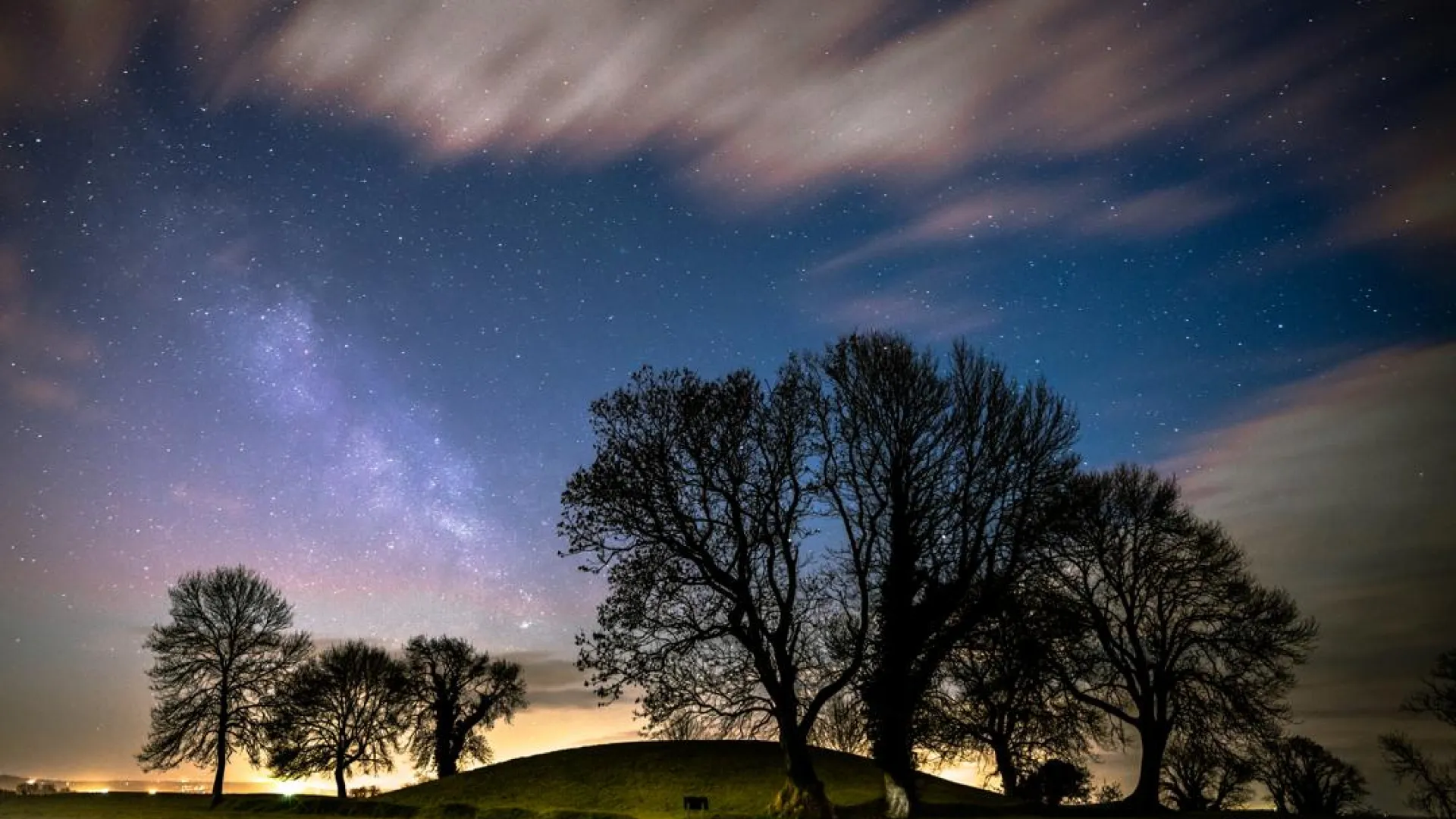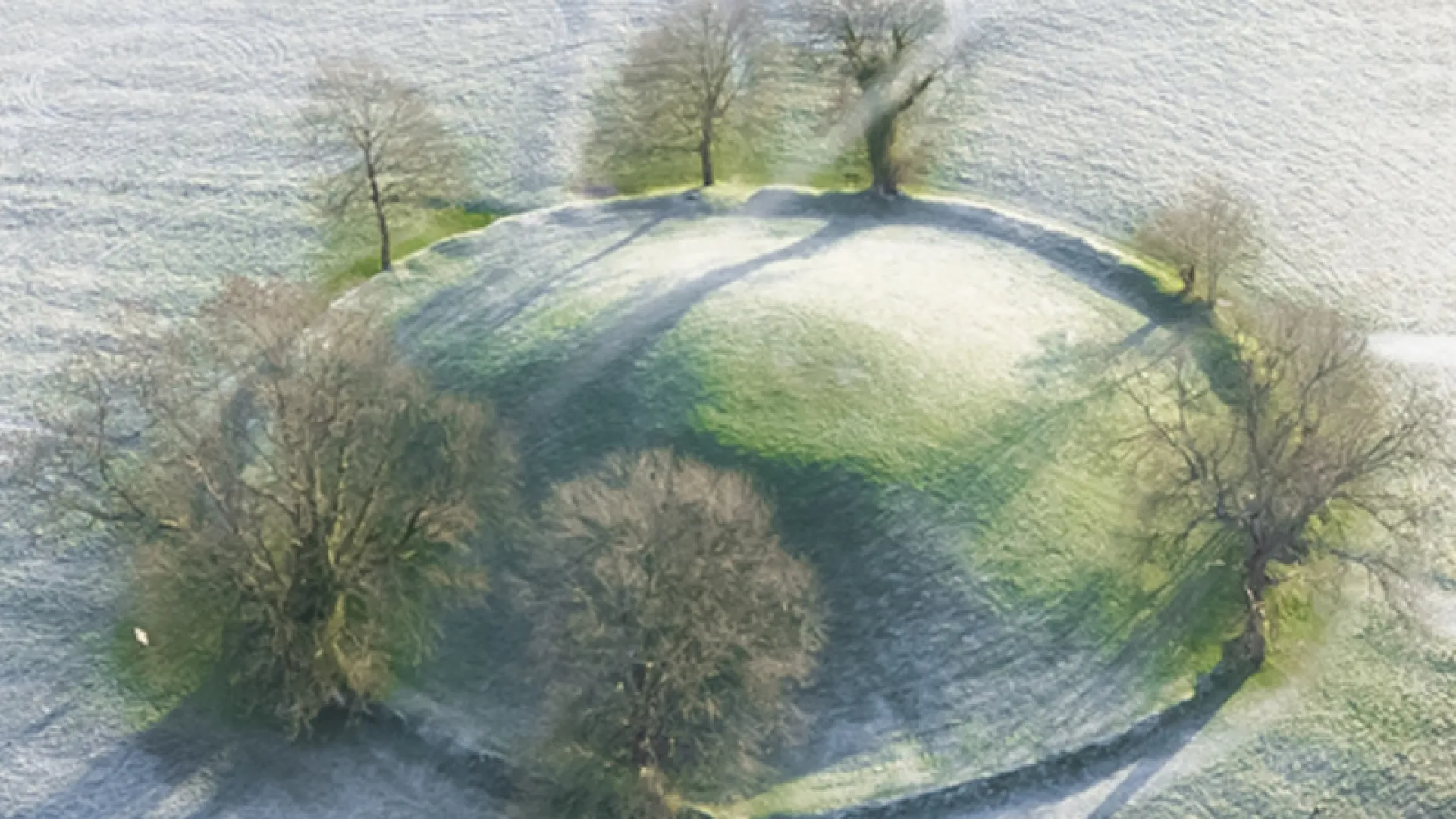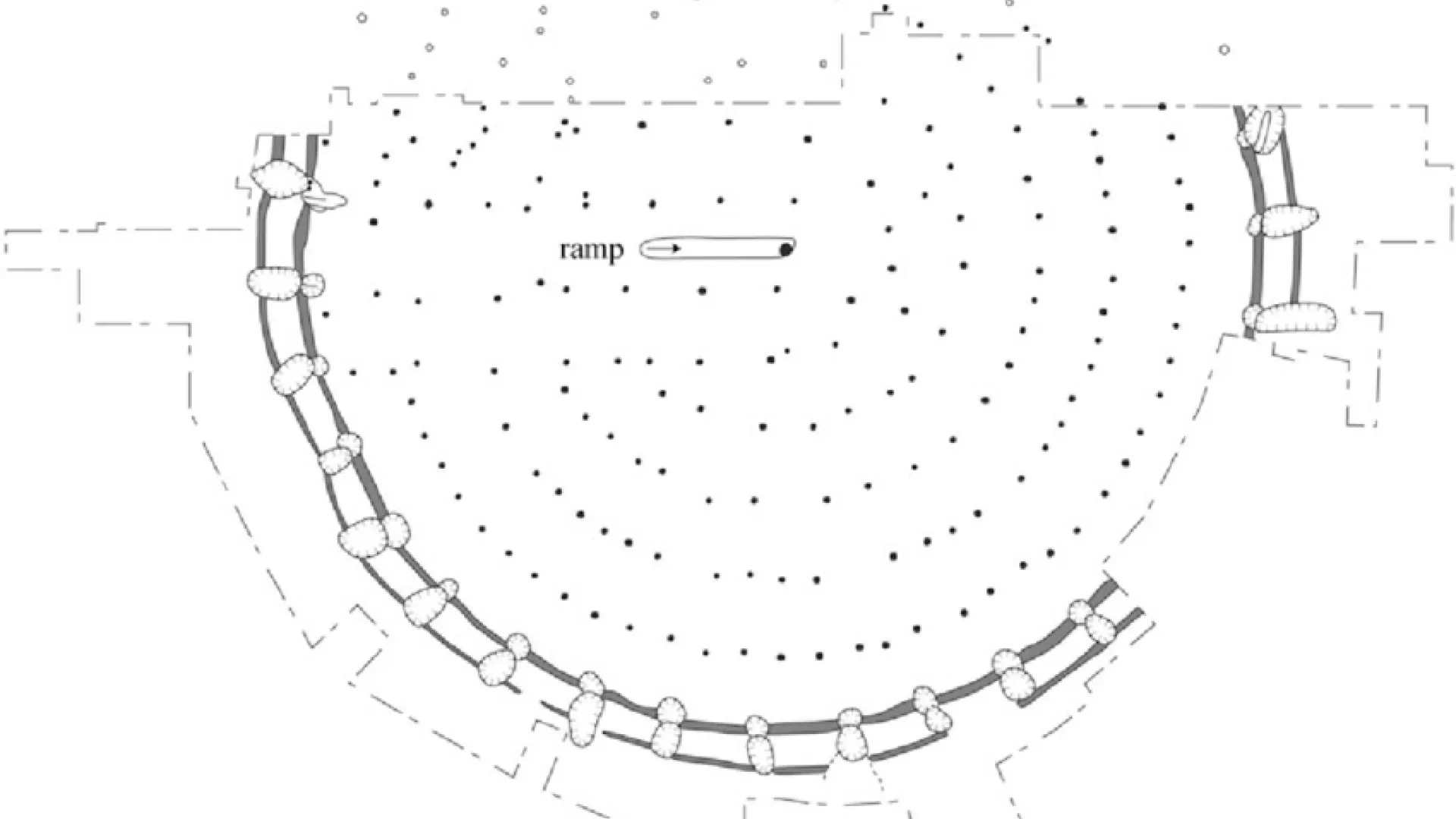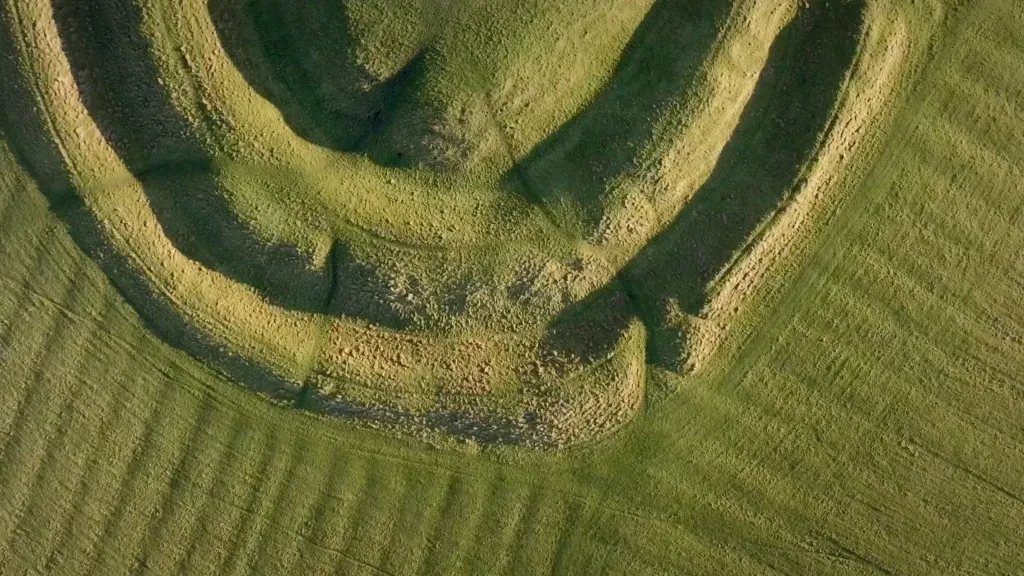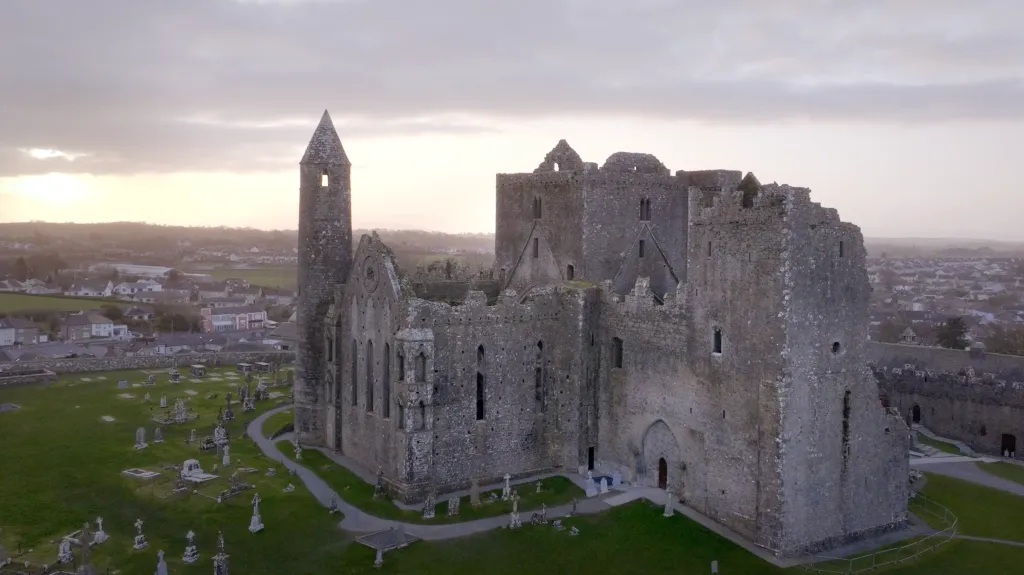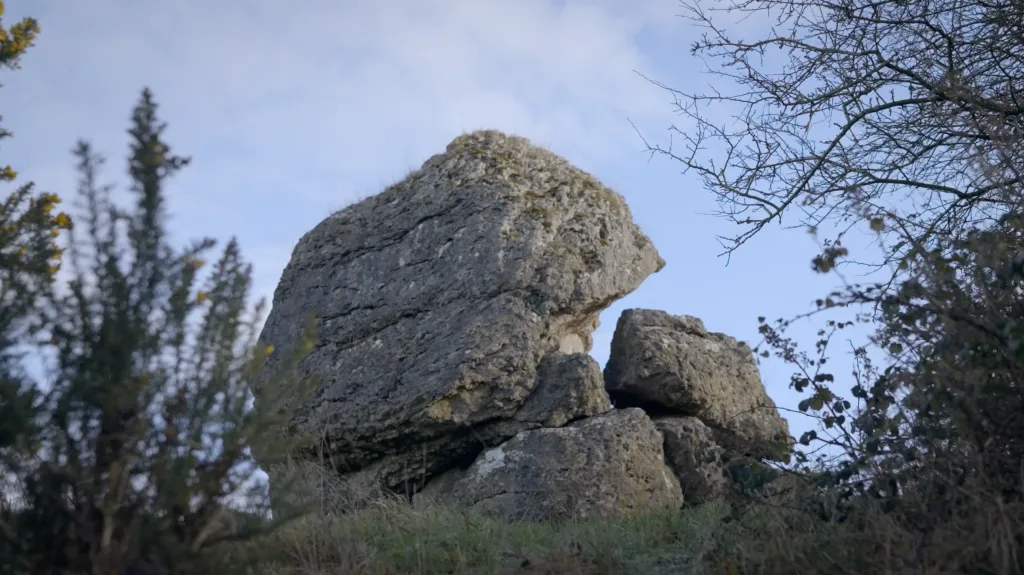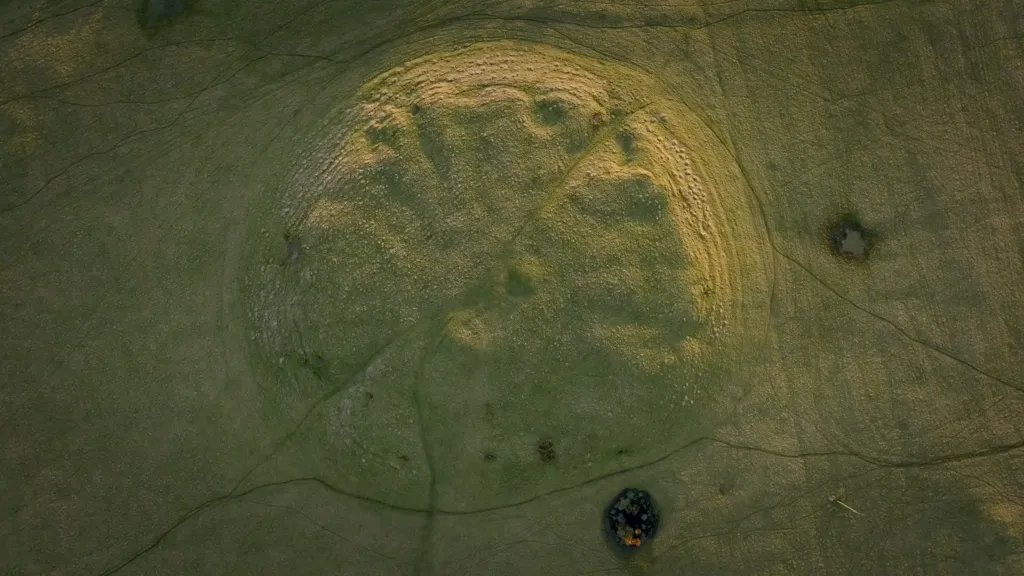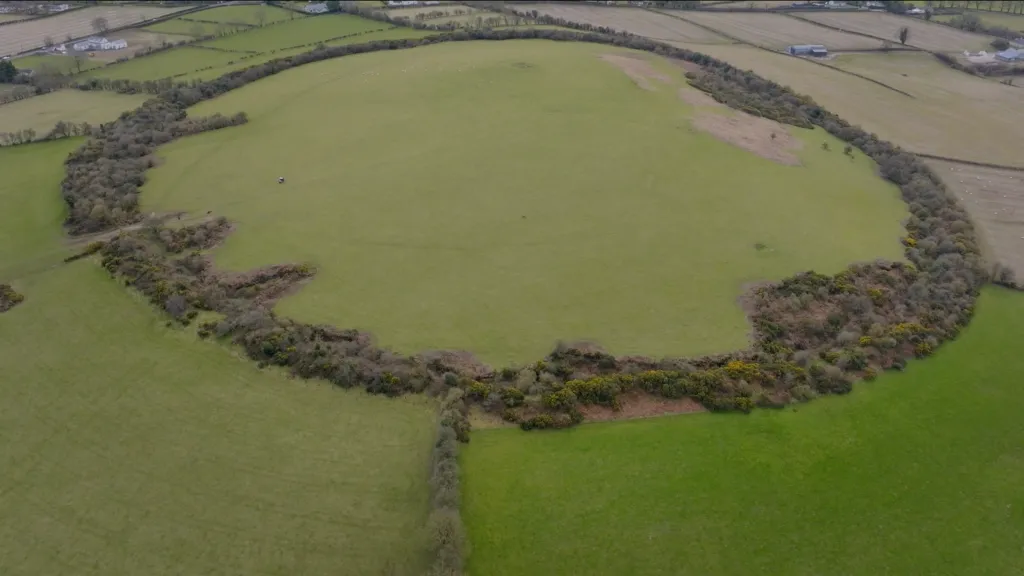Navan Fort is located on a rounded hilltop just west of Armagh and it may be no coincidence that Patrick traditionally chose to found his early church so close to these earthworks. The site is visible from a distance and has panoramic views. Visible remains are a massive enclosing bank, with an internal ditch, around the hilltop, within which are a ring ditch and large mound. Excavation over the past 50 years and more recent geophysical survey has revealed an intriguing and complex sequence of ritual construction on the hill.
The hilltop is encircled by a substantial ditch and outer bank forming a ceremonial enclosure. This was constructed about 100BC. About the same time a large mound was constructed on top of the hill. Excavations here found a timber structure 40m in diameter comprised of 5 rings of large oak posts, some 280 altogether. At the centre was a very large post, some of the wood of which survived and was dated to 95BC. Shortly after, while the structure was still standing, a cairn of boulders was constructed within it. The timber building was then burned deliberately, and the surviving cairn was capped by the mound of turves that can be seen today.
Armagh
KEY FEATURES
Navan Fort, or Emain Macha, is a key prehistoric ceremonial site in Ireland. As a Royal Site, it served both political and sacred roles, deeply tied to kingship and myth. Archaeological remains—such as a timber-ring structure, artificial mound, and ceremonial ditch enclosure—highlight its ritual significance. These features offer insight into the spiritual and cultural life of Iron Age Ireland.
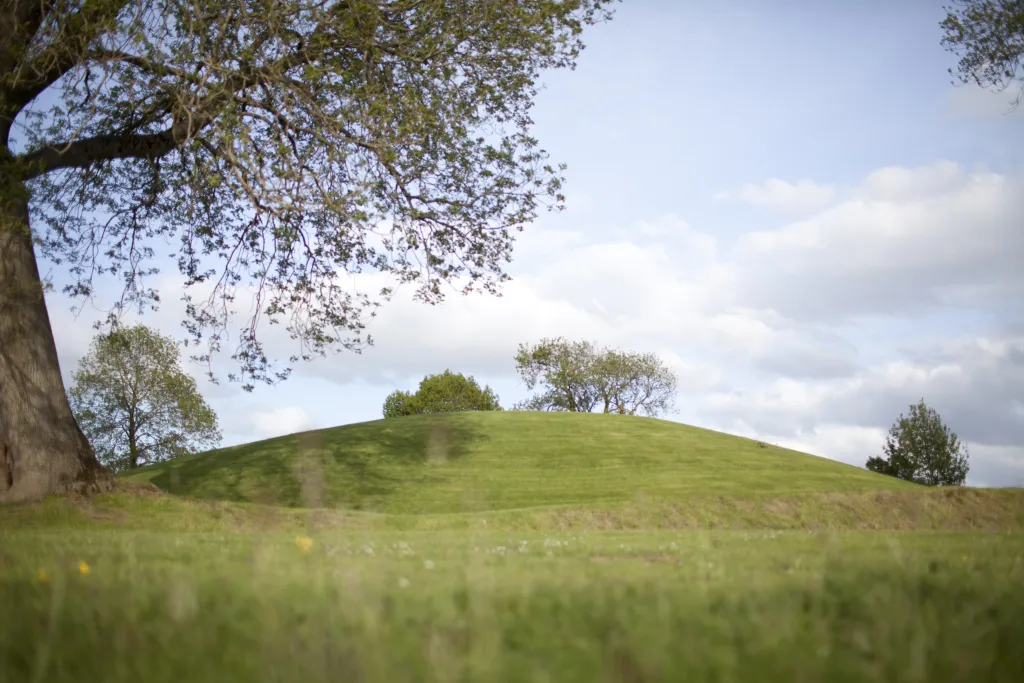
Ceremonial Enclosure
Some of the earliest substantive use of the hilltop, in the Late Bronze Age, was the construction of a large ditched enclosure with an internal palisade. This circular-plan earthwork of 250m in diameter may have delineated the sacred space and is comparable to earthworks at the provincial centres of Tara and Knockaulin or Dún Ailinne.
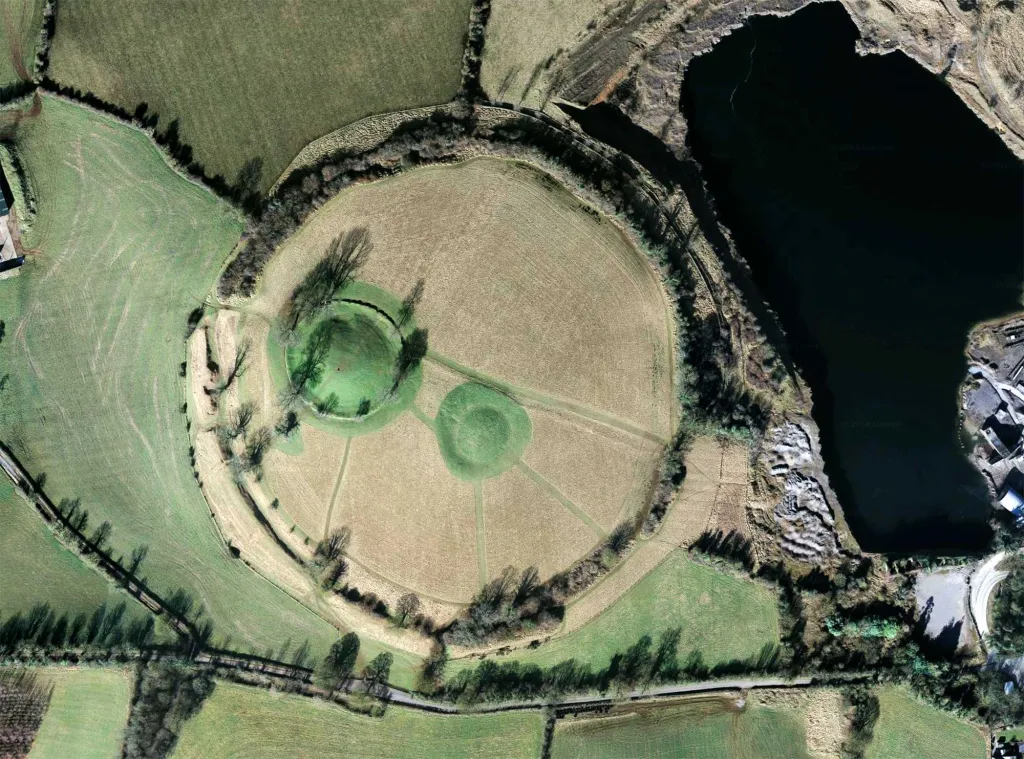
Ring-Barrow (Site A)
The level area on the summit of the hill extends to the east, where the large ring-barrow of site A was built. The ring ditch at site A surrounded a double-walled timber building, possibly of early medieval date, although it partially overlays a series of figure-of- eight structures, similar to those below Site A, also dated to the Iron Age and approached by a palisaded avenue.
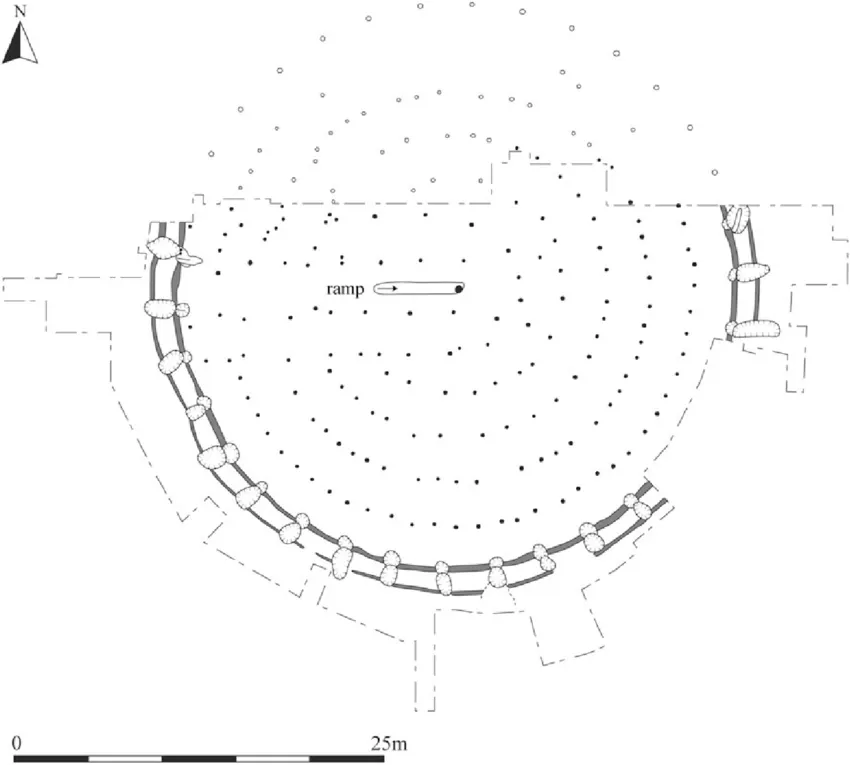
Timber-Ring Structure (Site B)
Around 95BC the massive enclosing bank and internal ditch were constructed along with a huge timber building, 40m in diameter on site B. Soon afterwards this structure was filled with limestone boulders, deliberately burnt down and mounded over. This dramatic act likely marked a powerful ritual event and the artificial mound at Site B is understood to be a carefully constructed ceremonial platform built with layered soil, turf, and stone
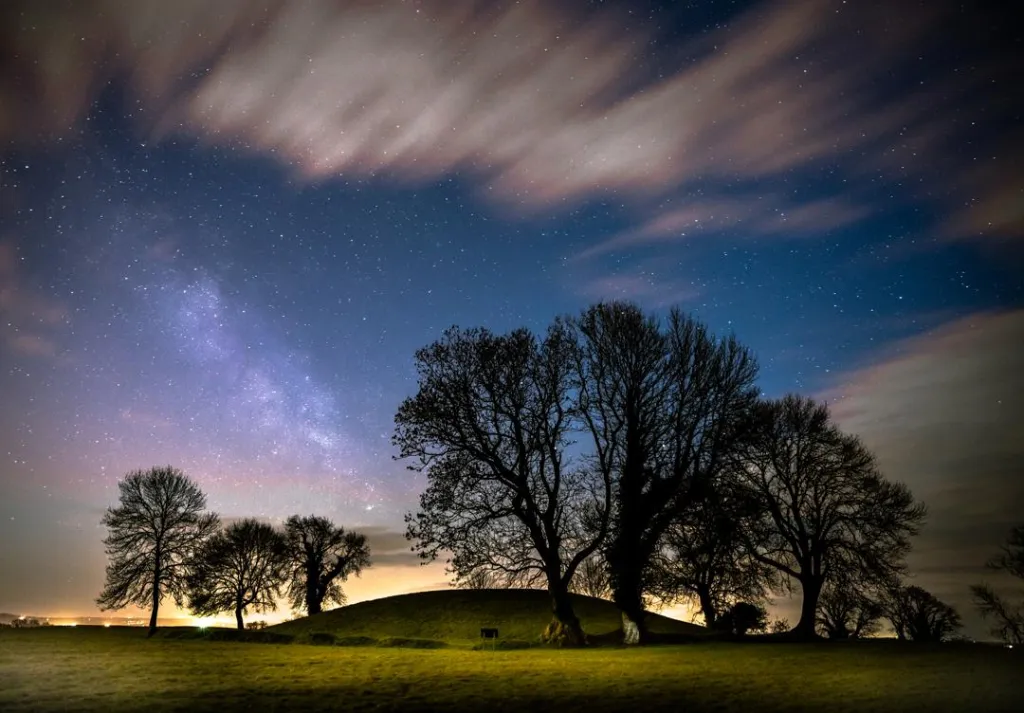
Mythological Associations
Navan Fort, known as Emain Macha in Irish mythology, is the legendary capital of the Ulster kings. Stories from the Ulster Cycle—featuring heroes like Conchobar mac Nessa and Cú Chulainn—are rooted here. Archaeological evidence aligns with these tales, giving cultural weight to its mythic past. This fusion of myth and material history underscores its central role in kingship, storytelling, and Irish cultural identity.
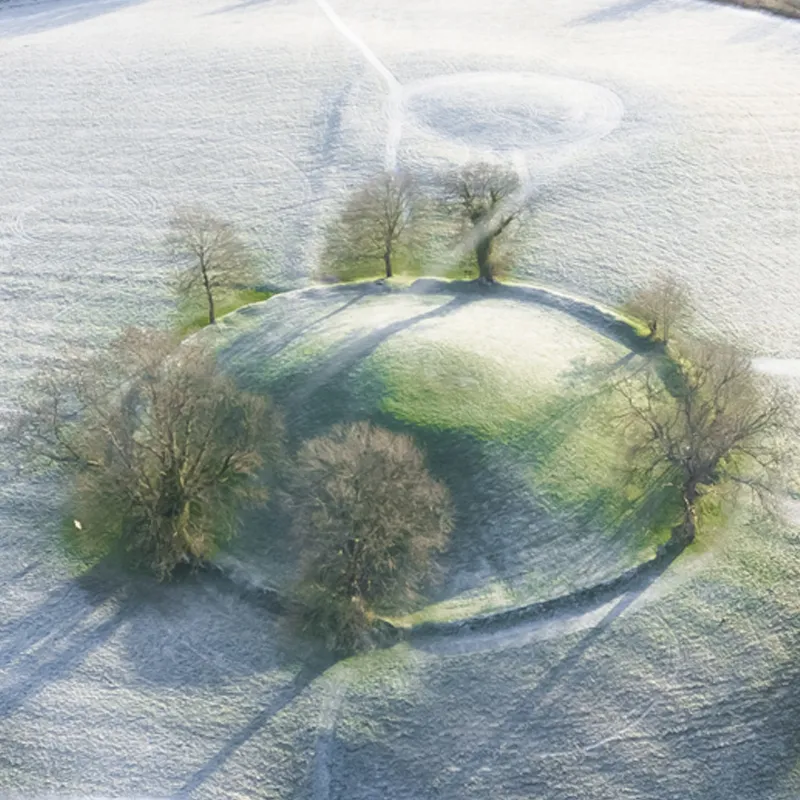
Loughnashade Horn
To the east of Navan Fort is a small lake called Loughnashade. In 1798 four large bronze horns were found while digging a drain in the margin of the lake. Nearby were several human skulls. Only one of the horns survives, and is on display at the National Museum of Ireland, Dublin. The bell end of the horn is surrounded by a bronze panel decorated in an Iron Age art style called ‘La Tène’. These objects and human remains have been interpreted as evidence for ritual deposition.
Visit Navan Fort
Accessible All Year RoundPaid
81 Killylea Road,
Co. Armagh, BT60 4LD
Outdoor site
Accessible year-round
Apr–Sept:
Tues–Sun, 10:00–17:00
Oct–Mar:
Tues–Sun, 10:00–16:00
Other Royal Sites
